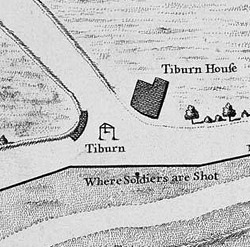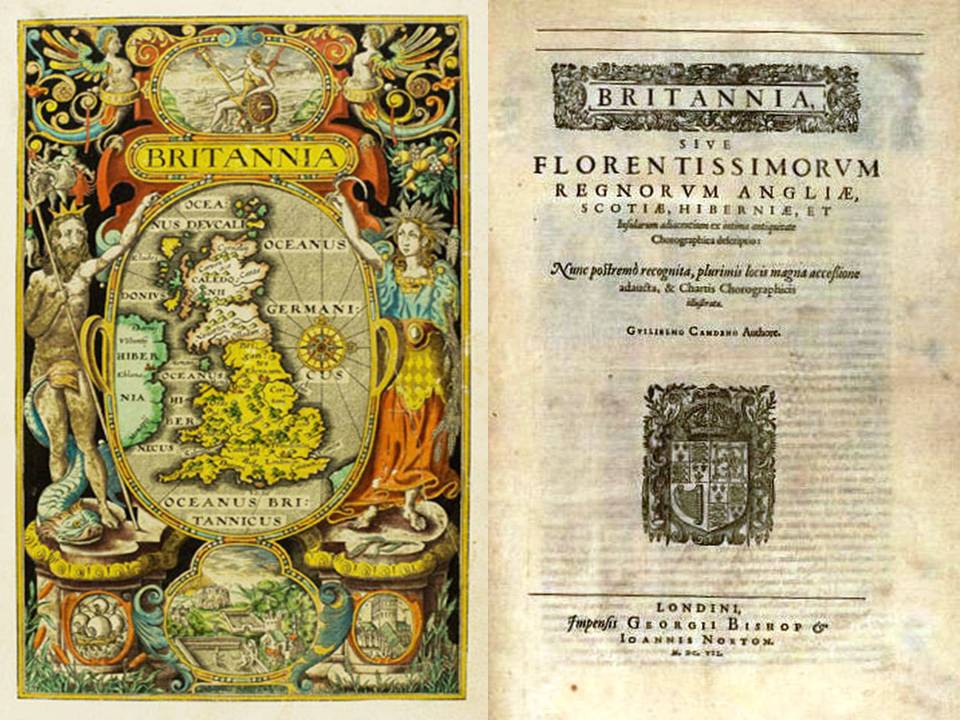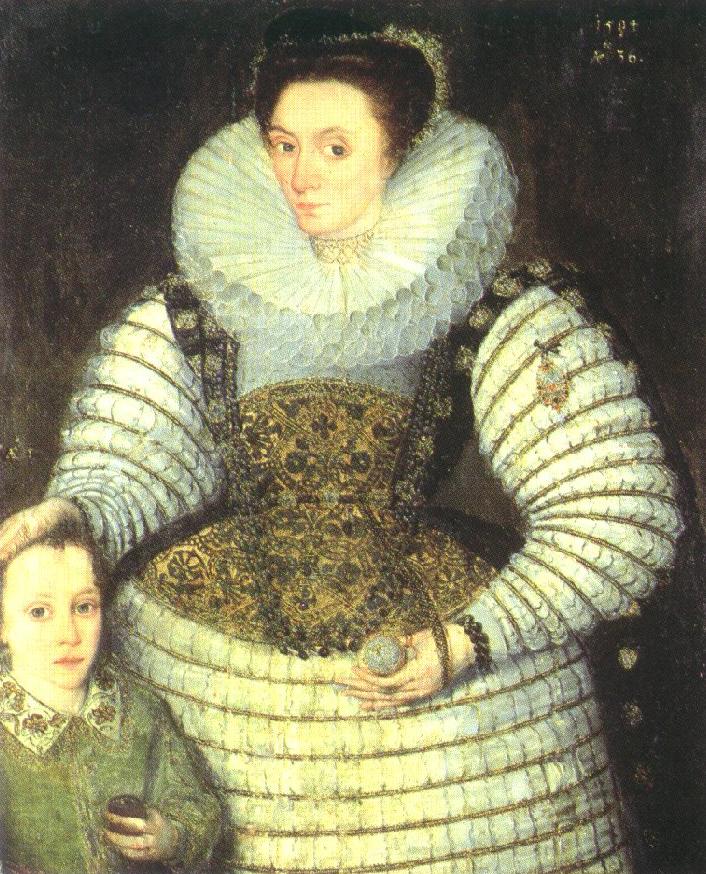|
Rowland Yorke
Rowland York or Yorke (died 1588) was an English soldier of fortune and defector to Spain. Early life Rowland York was the ninth of eleven sons of Sir John York. He volunteered for the Netherlands under Thomas Morgan of Llantarnam in 1572. He embarked at Gravesend on 19 March that year with his two companions, the poet George Gascoigne and William Herle, but the ship in which they sailed was nearly lost on the coast of Holland owing to the incompetence of the Dutch pilot. Reaching the English camp in safety, he took part in August that year in the attack on Goes under Captain (afterwards Sir) Humphrey Gilbert and the Prince of Orange's agent Jerome Tseraerts. Plots and equivocal reputation Opinions differed about York. By some, he was held "bolde of courage, provident in direction, industrious in labour, and quick in execution". But his profligacy and the fact that he was a Roman Catholic caused him from the first to be distrusted by the states.Emanuel van Meteren, ''Historia B ... [...More Info...] [...Related Items...] OR: [Wikipedia] [Google] [Baidu] |
Soldier
A soldier is a person who is a member of an army. A soldier can be a Conscription, conscripted or volunteer Enlisted rank, enlisted person, a non-commissioned officer, a warrant officer, or an Officer (armed forces), officer. Etymology The word ''soldier'' derives from the Middle English word , from Old French or , meaning mercenary, from , meaning shilling's worth or wage, from or , shilling. The word is also related to the Medieval Latin , meaning soldier (). These words ultimately derive from the Late Latin word , referring to an Ancient Rome, ancient Roman coin used in the Byzantine Empire. Occupational and other designations In most armies, the word "soldier" has a general meaning that refers to all members of an army, distinct from more specialized military occupations that require different areas of knowledge and skill sets. "Soldiers" may be referred to by titles, names, Nickname, nicknames, or Acronym, acronyms that reflect an individual's military occupation spec ... [...More Info...] [...Related Items...] OR: [Wikipedia] [Google] [Baidu] |
Alexander Farnese, Duke Of Parma
Alexander Farnese (, ; 27 August 1545 – 3 December 1592) was an Italian noble and military leader, who was Duke of Parma, Piacenza and Castro from 1586 to 1592, as well as Governor of the Spanish Netherlands from 1578 to 1592. Nephew to King Philip II of Spain, he served in the Battle of Lepanto and the subsequent campaigns of the Holy League against the Ottoman Empire, being latter appointed general of the Spanish army during the Dutch revolt until his death in 1592. During the French Wars of Religion, he decisively relieved Paris for the Catholic League. His talents as a commander, strategist and organiser earned him the regard of contemporaries and historians as the greatest general of his age, as well as one of the best in history. He stood out for his equal proficiency at war and diplomacy. Under his leadership, Philip II's army achieved the most comprehensive successes in the history of the Eighty Years' War, capturing more than thirty towns between 1581 and 1587 bef ... [...More Info...] [...Related Items...] OR: [Wikipedia] [Google] [Baidu] |
Patrick O'Collun
Patrick O'Collun, also known as Patrick Cullen or Patrick Collen, (died 1594) was an Irish soldier and fencing master who was executed at Tyburn in 1594 for treason, in that he had conspired to murder Queen Elizabeth I. Background Little is known of his early life, other than the fact that he was Irish and a Roman Catholic. He first appeared in London in the late 1580s, as a fencing teacher in the entourage of Sir Florence MacCarthy, chief of the MacCarthy clan, (the MacCarthy Mór), whose own loyalty to the Crown was deeply suspect, and who was later accused by his enemies of being a party to O'Collun's plot. Conspiracy About 1590, O'Collun went to the Spanish Netherlands, where he entered the service of the renegade English Roman Catholic soldier Sir William Stanley: Stanley and his associate, the Jesuit William Holt, instigated numerous plots to assassinate Elizabeth. According to the indictment at O'Collun's trial, the prime mover in the plot was Stanley's lieutenant J ... [...More Info...] [...Related Items...] OR: [Wikipedia] [Google] [Baidu] |
Queen Elizabeth I
Elizabeth I (7 September 153324 March 1603) was Queen of England and Ireland from 17 November 1558 until her death in 1603. She was the last and longest reigning monarch of the House of Tudor. Her eventful reign, and its effect on history and culture, gave name to the Elizabethan era. Elizabeth was the only surviving child of Henry VIII and his second wife, Anne Boleyn. When Elizabeth was two years old, her parents' marriage was annulled, her mother was executed, and Elizabeth was declared illegitimate. Henry restored her to the line of succession when she was 10. After Henry's death in 1547, Elizabeth's younger half-brother Edward VI ruled until his own death in 1553, bequeathing the crown to a Protestant cousin, Lady Jane Grey, and ignoring the claims of his two half-sisters, Mary and Elizabeth, despite statutes to the contrary. Edward's will was quickly set aside and the Catholic Mary became queen, deposing Jane. During Mary's reign, Elizabeth was imprisoned for nea ... [...More Info...] [...Related Items...] OR: [Wikipedia] [Google] [Baidu] |
Tyburn
Tyburn was a Manorialism, manor (estate) in London, Middlesex, England, one of two which were served by the parish of Marylebone. Tyburn took its name from the Tyburn Brook, a tributary of the River Westbourne. The name Tyburn, from Teo Bourne (stream), Bourne, means 'boundary stream'.Gover, J. E. B., Allen Mawer and F. M. Stenton ''The Place-Names of Middlesex''. Nottingham: English Place-Name Society, The, 1942: 6. The parish, and probably therefore also the manor, was bounded by Roman roads to the west (modern Edgware Road) and south (modern Oxford Street). The junction of these was the site of the famous Tyburn Gallows (known colloquially as the "Tyburn Tree"), now occupied by Marble Arch. For many centuries the name Tyburn was synonymous with capital punishment: it was the principal place for execution for London and Middlesex criminals and convicted Treason, traitors, including many religious martyrs. In the 18th century it was also known as "God's Tribunal". Hangings at ... [...More Info...] [...Related Items...] OR: [Wikipedia] [Google] [Baidu] |
Gibbeting
Gibbeting is the use of a gallows-type structure from which the dead or dying bodies of criminals were hanged on public display to deter other existing or potential criminals. Occasionally, the gibbet () was also used as a method of public execution, with the criminal being left to die of exposure, thirst and/or starvation. The practice of placing a criminal on display within a gibbet is also called "hanging in chains". Display Gibbeting was a common law punishment, which a judge could impose in addition to execution. As a sentence for murder, this practice was codified in England by the Murder Act 1751. It was most often used for traitors, robbers, murderers, highwaymen, and pirates and was intended to discourage others from committing similar offenses. The structures were therefore often placed next to public highways (frequently at crossroads) and waterways. Exhibiting a body could backfire against a monarch, especially if the monarch was unpopular. The rebels Hen ... [...More Info...] [...Related Items...] OR: [Wikipedia] [Google] [Baidu] |
Deventer
Deventer (; Sallaans dialect, Sallands: ) is a List of cities in the Netherlands by province, city and Municipalities of the Netherlands, municipality in the Salland historical region of the Provinces of the Netherlands, province of Overijssel, Netherlands. In 2020 the municipality of Deventer had a population of 100,913. The city is largely situated on the east bank of the river IJssel, but it also has a small part of its territory on the west bank. In 2005 the municipality of Bathmen (with a population of about 5,000 people) was merged with Deventer as part of a national effort to reduce bureaucracy in the country. Deventer is one of the oldest cities in the Netherlands. The place is mentioned in 9th-century sources from the Diocese of Utrecht (695–1580), Diocese of Utrecht. A charter from 877 AD mentions seven farmsteads in ''Daventre portu'' (the Deventer harbor). In 952 AD, Deventer is mentioned as a city in a gift certificate from Otto I, Holy Roman Emperor, King Otto I. ... [...More Info...] [...Related Items...] OR: [Wikipedia] [Google] [Baidu] |
William Stanley (Elizabethan)
Sir William Stanley (1548 – 3 March 1630), son of Sir Rowland Stanley of Hooton (died 1612) and Margaret Aldersy, was a member of the Stanley family, Earls of Derby. He was an officer and a recusant, who served under Elizabeth I of England and is most noted for his surrender of Deventer to the Spanish in 1587. Early career Stanley was educated with Dr. Standish at Lathom and was brought up in the Catholic faith. After school, he entered the service of his kinsman, Edward Stanley, 3rd Earl of Derby (c.1508–1572), and then served in the Netherlands as a volunteer under the Duke of Alba from 1567 to 1570. In 1570 he was sent on service to Ireland. Ireland On the outbreak of the Second Desmond Rebellion in 1579, Stanley was promoted to captain under Sir William Drury, lord justice of Ireland, who knighted him at Waterford for his service in penetrating Limerick in pursuit of the followers of Gerald FitzGerald, 14th Earl of Desmond. He fought in the battle of Monastern ... [...More Info...] [...Related Items...] OR: [Wikipedia] [Google] [Baidu] |
William Camden
William Camden (2 May 1551 – 9 November 1623) was an English antiquarian, historian, topographer, and herald, best known as author of ''Britannia'', the first chorographical survey of the islands of Great Britain and Ireland that relates landscape, geography, antiquarianism, and history, and the ''Annales'', the first detailed historical account of the reign of Elizabeth I of England. Early years William Camden was born in London. His father Sampson Camden was a member of The Worshipful Company of Painter-Stainers. He attended Christ's Hospital and St Paul's School, and in 1566 entered Oxford ( Magdalen College, Broadgates Hall, and finally Christ Church). At Christ Church, he became acquainted with Philip Sidney, who encouraged Camden's antiquarian interests. He returned to London in 1571 without a degree. In 1575, he became Usher of Westminster School, a position that gave him the freedom to travel and pursue his antiquarian researches during school vacations. ''Br ... [...More Info...] [...Related Items...] OR: [Wikipedia] [Google] [Baidu] |
Sconce (fortification)
A sconce is a small protective fortification, such as an earthwork, often placed on a mound as a defensive work for artillery. It was used primarily in Northern Europe from the late Middle Ages until the 19th century. This type of fortification was common during the English Civil War, and the remains of one such structure can be seen on Fort Royal Hill in Worcester, England. During the Eighty Years' War for Dutch independence, the sconces (''schans'' in Dutch) were often used to defend strategic places, but were used also during sieges and in circumvallations. Several more or less intact sconces remain in the Netherlands. The Zaanse Schans, one of the top tourist locations in the Netherlands, derived its name from its original function as a sconce. Sconces played a major part in the Serbian Revolution, countering the numerical superiority of the Turkish army. Most notable cases are the battles at Mišar, Deligrad and Čegar. Etymology The etymology of sconce is from the ... [...More Info...] [...Related Items...] OR: [Wikipedia] [Google] [Baidu] |
Zutphen
Zutphen () is a city and municipality located in the province of Gelderland, Netherlands. It lies some northeast of Arnhem, on the eastern bank of the river IJssel at the point where it is joined by the Berkel. First mentioned in the 11th century, the place-name appears to mean "south fen" ( in modern Dutch). In 2005, the municipality of Zutphen was merged with the municipality of Warnsveld, retaining its name. In 2021, the municipality had a population of . History In about 300 AD, a Germanic settlement was the first permanent town on a complex of the low river dunes. While many such settlements were abandoned in the early Middle Ages, Zutphen, on the strategic confluence of IJssel and Berkel, stayed. After the incorporation of the IJssel lands in Charlemagne's Francia, Zutphen became a local centre of governance under the Count of Zutphen. The Normans raided and ravaged it in 882. Afterwards, a circular fortress was built to protect the budding town against Viking a ... [...More Info...] [...Related Items...] OR: [Wikipedia] [Google] [Baidu] |
Sir Philip Sidney
Sir Philip Sidney (30 November 1554 – 17 October 1586) was an English poet, courtier, scholar and soldier who is remembered as one of the most prominent figures of the Elizabethan age. His works include a sonnet sequence, '' Astrophil and Stella'', a treatise, '' The Defence of Poesy'' (also known as ''The Defence of Poesie'' or ''An Apology for Poetrie'') and a pastoral romance, '' The Countess of Pembroke's Arcadia''. He died fighting the Spanish in the Netherlands, age 31, and his funeral procession in London was one of the most lavish ever seen. Biography Early life Born at Penshurst Place, Kent, of an aristocratic family, he was educated at Shrewsbury School and Christ Church, Oxford. He was the eldest son of Sir Henry Sidney and Lady Mary Dudley. His mother was the eldest daughter of John Dudley, 1st Duke of Northumberland, and the sister of Robert Dudley, 1st Earl of Leicester. His sister, Mary, was a writer, translator and literary patron, and married Henry ... [...More Info...] [...Related Items...] OR: [Wikipedia] [Google] [Baidu] |








